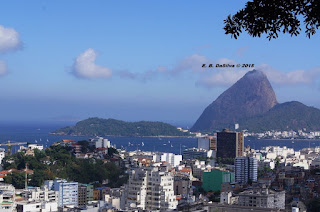Dr. Edmar Bernardes DaSilva (Masters in Geography and Doctor of Geography Education)
Fernando de Noronha, Brazil
Geography sees tourism differently from traditional businesses working in the travel industry. The approach of traditional business to tourism is about making profit and being well organized to earn the most profit as possible.On the other hand, TOURISM GEOGRAPHY, studies the tourism phenomenon on both: the geographic location where tourism is practiced, and also leading a close link of touristy experience with the geographical natural and cultural landscapes present at the touristy destination. Geography’s study of tourism in reality starts focusing on the input of natural and cultural landscapes (or elements) that the geographic background of a tourist destination is made up of. After all the mentioned above is done questions like the ones below are asked:
Ipanema Rio de Janeiro Brazil (An international touristic Mecca)
- How will tourists in reality experience the physical (natural) and cultural (men-made) imprints of the geographical destination?
- What mental maps of the culural and physical landscapes might the tourist have internalized (pictures and anticipations) that will fill their minds with the natural and cultural elements of the tourist destination?
- What arrangement and visual representations will successfully permit the traveler to extensively enjoy and remember the tourist destination’s exclusive natural and cultural geographies.
The tourism geography method gives us a good example of the relevance of human geography in the field of geography. When a student specializes in tourism geography (with a concentration), this student will be prepared to be a tourism geography specialist.
Capocabana Rio Brazil
Tourism Geography Major’s Specific Objectives:
- Students who finished their concentration on TOURISM GEOGRAPHY must have an excellent understanding of geography (cartographic, physical and human). The TOURISM GEOGRAPHY majors need to learn not only basic geographical locations, but also have a deep understanding of the connections between humans and the physical environment where they live in.
Paris France another international touristic Mecca
- TOURISM GEOGRAPHY majors must graduate with a profound understanding of the philosophy, behavioral characteristics, impacts (e.g. economic impacts), capacity (e.g. carrying capacity), sectors, innovations, technological advances, tourism growth projections, and historical background of the tourism process (could be local, regional and at national levels). Learn how tourism effects and is effected by the human geography of a region, and also how tourism effects and is effected by the physical geography of a region.
The River Rhine in Germany (A hot touristic spot in Germany)
- All students when finished completing TOURISM GEOGRAPHY must have a solid understanding of the significance and prospects of what is to be a TOURISM PROFESSIONAL, and have the ability to understand the PRATICE OF PROFESSIONAL ETHICS. They must have a good to excellent ability in creative oral and written communication, and finally have a great knowledge of how to be a presenter (e.g. at a conference).
Pictures by Edmar Bernardes DaSilva, MA and ED.D. and Robb Kvasnak MA and Ed.D.
Copyright (Direitos Autorais) © All rights reserved (Todos os direitos reservados)










































